🧭 Introduction
African Fat-Tailed Geckos are known for their calm temperament and hardy nature, but that doesn’t mean they’re immune to health issues. Whether you’re a beginner or experienced reptile keeper, understanding early warning signs and how to support a healthy shed cycle is essential.
In this guide, we’ll cover:
- Common health problems in fat-tailed geckos
- What healthy behavior looks like
- How to handle stuck sheds and dehydration
- When to consult a vet
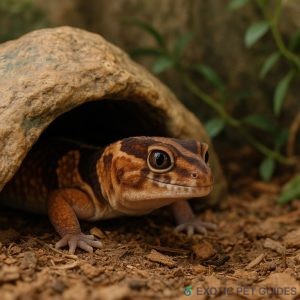
✅ Signs of a Healthy Gecko
Before jumping into problems, here’s what good health looks like:
- Bright, clear eyes
- A thick, evenly shaped tail
- Alert but calm behavior at night
- Steady appetite (eating 2–3 times a week in adults)
- Consistent bowel movements (every 2–3 days)
⚠️ Common Health Problems
1. Impaction
Caused by eating substrate (like sand) or undigestible food.
Signs:
- Not pooping for 4+ days
- Bloated belly
- Lethargy or dragging back legs
Prevention:
- Use paper towel, reptile carpet, or tile as substrate
- Don’t feed insects too large
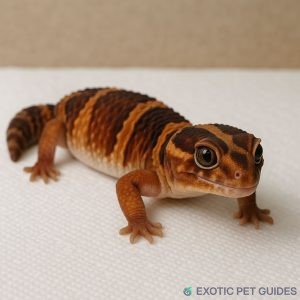
2. Respiratory Infection (RI)
Can occur from cold, damp enclosures.
Signs:
- Wheezing or clicking sounds
- Bubbles from nose or mouth
- Open-mouth breathing
- Lethargy
Treatment:
- Raise basking temps (90–92°F)
- Keep humidity in check
- Vet visit for antibiotics
3. Stuck Shed (Dysecdysis)
Most common around toes, tail tip, and eyes.
Causes:
- Low humidity
- Lack of rough surfaces
- Dehydration
Treatment:
- Soak in lukewarm water for 10–15 minutes
- Use a damp paper towel in a small container
- Gently assist with cotton swab or tweezers
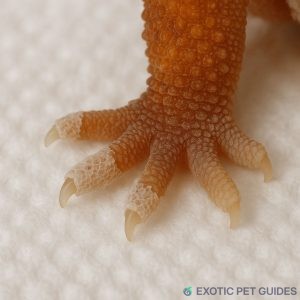
4. Dehydration
Despite coming from arid regions, Fat-Tails need humid hides.
Signs:
- Wrinkled skin
- Sunken eyes
- Poor shedding
- Lethargy
Solutions:
- Provide moist hide (sphagnum moss works great)
- Offer fresh water daily
- Mist enclosure as needed
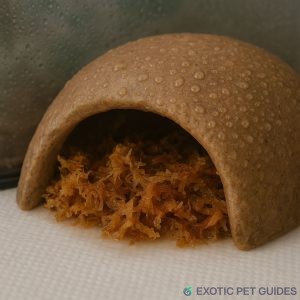
5. Metabolic Bone Disease (MBD)
Result of calcium deficiency, especially without UVB or supplements.
Signs:
- Twitching or shaky limbs
- Curved spine or limbs
- Jaw deformity
- Difficulty walking or standing
Prevention:
- Regular calcium + D3 supplement
- Optional: UVB lighting (5.0 strength)
🧠 Once MBD progresses, it’s often irreversible. Prevention is key.
🧪 Parasites & Internal Issues
Warning signs:
- Weight loss despite eating
- Runny or discolored stool
- Vomiting (rare but possible)
Action:
Get a fecal test from a reptile vet. Parasites like coccidia or pinworms are treatable with medication.
🧼 How to Prevent Illness
| Best Practice | Why It Matters |
|---|---|
| Stable enclosure temps | Immune system needs proper heat |
| Clean hides and dishes | Prevent bacterial infections |
| Quarantine new reptiles | Avoid cross-contamination |
| Watch for appetite drops | First sign of many issues |
| Track shedding cycles | Detect stuck shed or hydration problems |
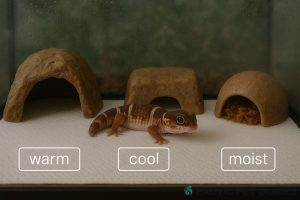
🆘 When to Call a Reptile Vet
Get professional help if:
- Your gecko hasn’t eaten in 2+ weeks
- Shows signs of paralysis or severe weakness
- Has visible swelling or open wounds
- Can’t shed properly even after soak
- Discharges from mouth or nose
👉 Always seek a certified exotic animal vet with reptile experience.